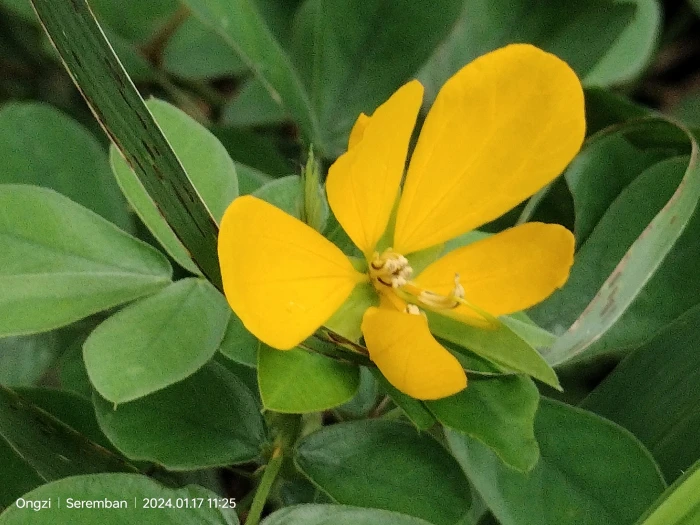Sickle Senna
(Senna tora)
Sickle Senna (Senna tora)
/
/

© Ong Jyh Seng
CC BY-SA 4.0
Image By:
© Ong Jyh Seng
Recorded By:
Copyright:
CC BY-SA 4.0
Copyright Notice:
Photo by: © Ong Jyh Seng | License Type: CC BY-SA 4.0 | License URL: http://creativecommons.org/licenses/by-sa/4.0/ | Uploader: ongzi | Publisher: iNaturalist |

























Estimated Native Range
Climate Requirements
| • Precipitation | 53" - 87" |
| • High Temp. | 86°F - 102°F |
| • Low Temp. | 42°F - 64°F |
Summary
Senna tora, commonly known as sickle senna, is an herbaceous annual plant originally from tropical regions of Central and South America, including rainforests and disturbed sites. It can grow up to 35 inches tall and is characterized by its pinnate leaves and clusters of yellow flowers that bloom from summer to fall. The flowers are modest in size but can be quite numerous, creating a noticeable display. Sickle senna produces fruit in the form of curved pods, which resemble a sickle, hence its common name.
Sickle senna is valued for its medicinal properties, particularly in traditional medicine, where it is used to treat various ailments. It is also used as a green manure crop due to its ability to fix nitrogen in the soil, which improves soil fertility. In cultivation, Senna tora prefers full sun to partial shade and thrives in well-drained soils. It is drought-tolerant once established and requires minimal maintenance, making it suitable for xeriscaping. However, its potential to become invasive when grown outside its native range should be considered, and it is advisable to consult local regulations before planting.CC BY-SA 4.0
Sickle senna is valued for its medicinal properties, particularly in traditional medicine, where it is used to treat various ailments. It is also used as a green manure crop due to its ability to fix nitrogen in the soil, which improves soil fertility. In cultivation, Senna tora prefers full sun to partial shade and thrives in well-drained soils. It is drought-tolerant once established and requires minimal maintenance, making it suitable for xeriscaping. However, its potential to become invasive when grown outside its native range should be considered, and it is advisable to consult local regulations before planting.CC BY-SA 4.0
Plant Description
- Plant Type: Herb
- Height: 2-3 feet
- Width: 2-3 feet
- Growth Rate: Rapid
- Flower Color: Yellow
- Flowering Season: Summer, Fall
- Leaf Retention: Deciduous
Growth Requirements
- Sun: Full Sun
- Water: Medium
- Drainage: Medium, Fast
Common Uses
Edible*Disclaimer: Easyscape's listed plant edibility is for informational use. Always verify the safety and proper identification of any plant before consumption., Erosion Control, Low Maintenance
Natural Habitat
Originally from tropical regions of Central and South America, including rainforests and disturbed sites
Other Names
Common Names: Sickle Senna, Sicklepod, Fedegoso, Foetid Cassia, Gingangnamcha, Gyeolmyeongja, Sickle Wild Sensitive-Plant, Sicklepod Senna
Scientific Names: Senna tora, Cassia boreensis, Cassia borneensis, Cassia contorta, Cassia foetida, Cassia gallinaria, Cassia humilis, Cassia numilis, Cassia obtusifolia var. humilis
GBIF Accepted Name: Senna tora